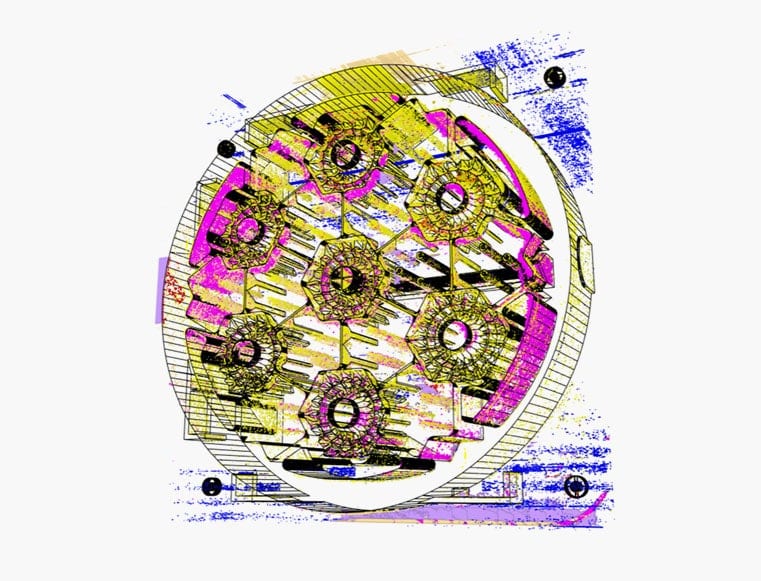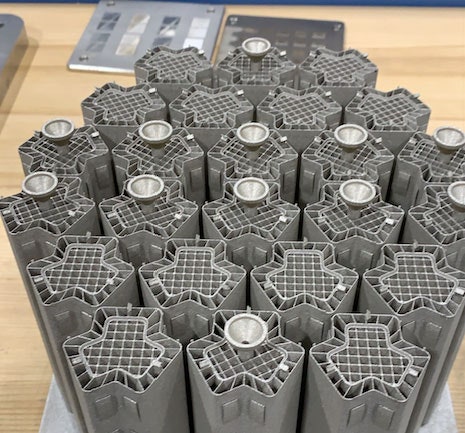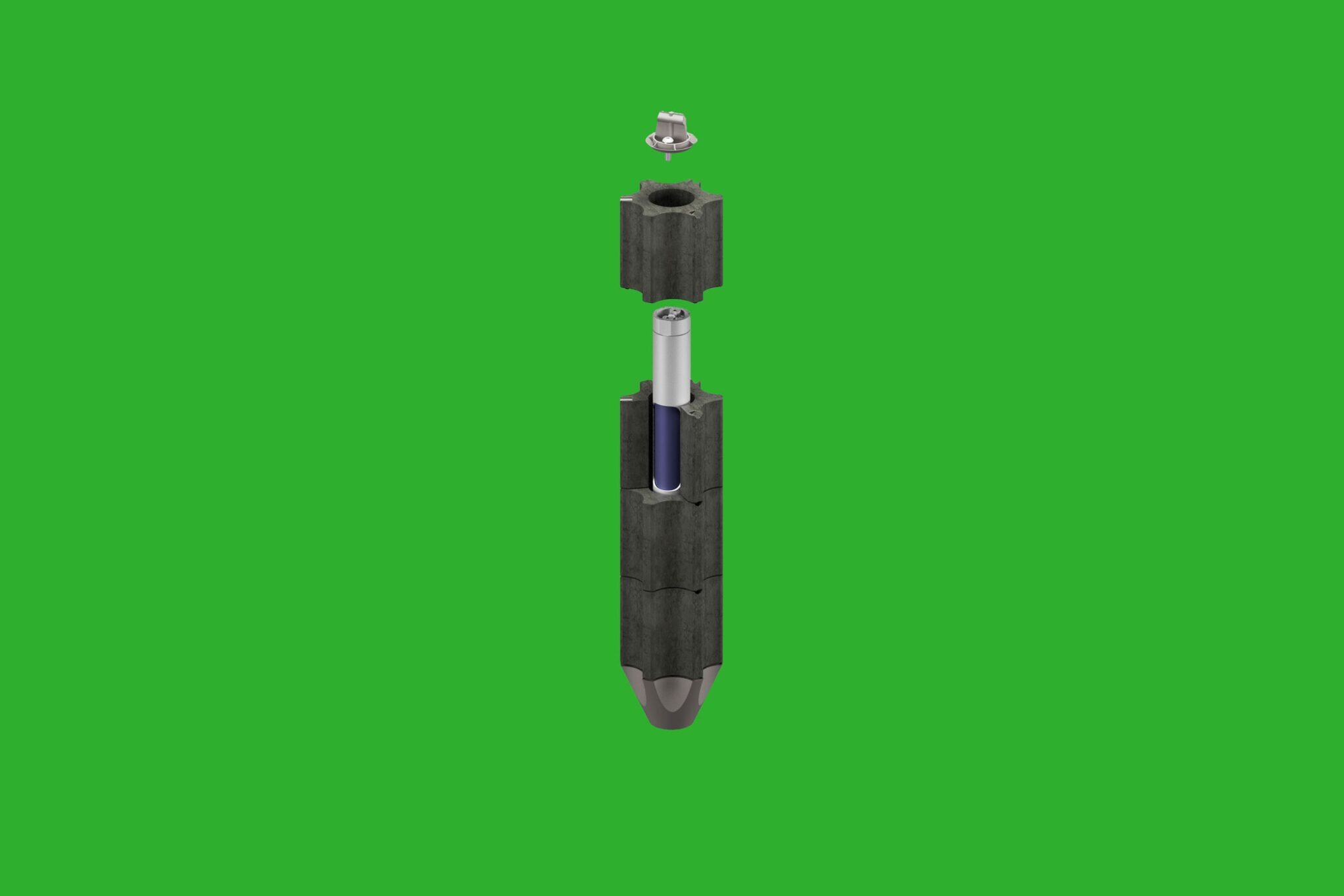Kurt Terrani wanted to accelerate the future of nuclear energy-so he turned to the past of nuclear energy. Over the past year and a half, Terrani and a team of physicists, engineers, and computer scientists at Oak Ridge National Laboratory in Tennessee have designed and manufactured components for gas-cooled nuclear reactors. This is a reactor almost as old as the nuclear age itself, but Oak Ridge ’s latest atomic splitter has unique 21st-century characteristics. When it is put into use in 2023, it will become the world’s first nuclear reactor with a 3D printed core.
“The goal is to fundamentally change the way we do nuclear.” Trani, the technical director of the Oak Ridge Conversion Challenge Reactor Program, said: “We are trying to find a faster way to build a nuclear system with superior performance.”
The nuclear industry is known for being very conservative and resistant to change. Terrani lamented that all nuclear reactors in the United States are still using the technology they dreamed of half a century ago. “If you don’t go bankrupt, don’t solve it” is a way to manage the inherent risks and high costs of building new nuclear power plants, but it also stifles innovation in industries that provide energy for the vast majority of US carbon emissions. Terrani is worried that if the nuclear industry does not accept new technologies, it will soon become obsolete.
This is not to say that we should start constructing experimental nuclear power plants without due diligence. The reason for the slow development of the nuclear industry is that the cost of calculation errors is huge-the accidents at the Chernobyl nuclear power plant and the Fukushima nuclear power plant are catastrophic disasters, and no one wants to repeat the mistakes. However, risk aversion has not prevented other notorious industries from adopting new technologies. Take a look at aerospace, where the company is now 3D printing the entire rocket, flying an automatic landing aircraft, and capturing boosters on the drone. In any case, most advanced reactors under development today are not entirely new. They are improved designs of reactors that were successfully built decades ago. “We know that all these concepts are feasible,” Terrani said. “The problem is that we can’t make them fast and cheap enough.”
Terrani and his colleagues are working hard. The Oak Ridge team recently completed the preliminary design of the 3D printed core, which is located at the center of its Conversion Challenge Reactor (TCR). Although most reactors will be made from conventional components, the core will be 3D printed entirely from silicon carbide, which is a very strong material that can hardly be melted. The cylindrical core is blunt metallic silver with several irregulars, non-angular fuel assemblies arranged in the center. This is where all the magic happens in nuclear reactors: it is responsible for maintaining uranium fuel and controlling the components of the fission reaction. The core, designed and printed at Oak Ridge, is less than a foot and a half tall and will be housed in a reactor much larger than a beer barrel.

The TCR is an innovative gas-cooled reactor that uses helium as coolant, whereas many usable reactors in the US now use water. Gas-cooled reactors are very fuel-efficient since they function at very substantial temperatures–that one is going to operate at approximately 1,200 degrees Fahrenheit–also Terrani claims that 3D-printing that the reactor core will raise the efficacy even greater. Additionally, traditional machining methods for creating a reactor center constrain their layout. The network of stations in the Oak Ridge center is tortuous and little for almost any machining methods. But because 3D printers build an item by fusing metal together layer by layer, engineers could assemble previously impossible core layouts.
“We’re no longer stuck with boring geometries,” Terrani states. “Instead of an array of things that all look the same, you can change the design across the core and get your system to respond to the environment.”
3D printing will help engineers receive a much better image of what is going on within a core when the reactor is functioning and up. At a reactor, the behavior of a core must be tracked from the exterior. Nevertheless, the new designs empowered by 3D printing allows for embedded detectors that will supply information straight from the core. What’s more, 3D printing gives nuclear engineers control over the production procedure. Individual areas of the TCR center take anywhere from 8 to 24 hours to publish and Terrani claims the whole heart can be published in a couple of weeks. Throughout a printing, a machine vision algorithm is sucking data from infrared detectors and other detectors that allow it to determine whether any flaws occur during printing.
Nonetheless, it’s what comes next that Terrani sees as the game-changer. When a component is created to get a traditional nuclear reactor, then it must go through a costly and slow certificate procedure. How expensive? Terrani says that he understands a nuclear plant that needed to pay $20,000 to get a bolt in the cost only a couple of pennies to make as the bolt was specially certified for atomic systems. (He declined to mention the particular plant.)

Terrani expects the reams of information created by 3D-printing components can hasten the accreditation process and reduce the price of obtaining a nuclear reactor online. He states that a 3D-printed widget that the size of the hand might easily create hundreds of gigabytes of information regarding the caliber of the part. When there’s a flaw, it is going to appear from the data–there is no requirement to use ultrasound and other costly tests to search for this. But rather than having an individual to sift throughout the mountain of information created by the 3D printer, researchers at Oak Ridge are training a machine-learning algorithm to utilize that information to confirm components. “Once we make the stuff, we don’t have to come back and spend multiple months certifying things,” Terrani states. “Imagine the moment that you’re done making a part and the AI can tell you if it’s good or bad. That’s the dream.”
“Nuclear power can’t be the only industry that doesn’t adopt any new technologies,” he states. “We want to open the floodgates and see advanced nuclear power in this country.”

